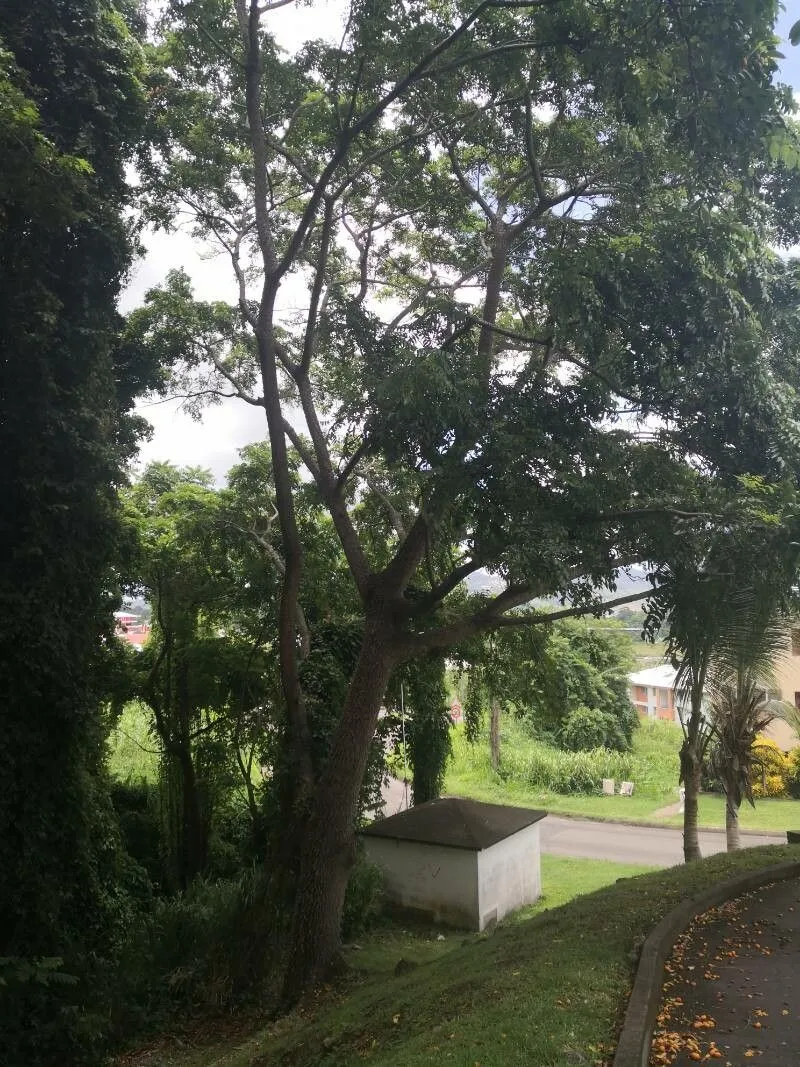
Author: L.
Bibliography: Sp. Pl.: 371 (1753)
Year: 1753
Status: accepted
Rank: species
Genus: Spondias
Vegetable: False
Observations: Mexico to Trop. America
Yellow mombin, scientifically known as Spondias mombin, is a remarkable fruit-bearing tree belonging to the Anacardiaceae family. Originating in Mexico and extending through tropical regions of the Americas, this plant has garnered attention for its distinctive attributes and cultural significance.
The Yellow mombin tree is notable for its medium to large size, often reaching heights of 15 to 22 meters. Its trunk is generally straight and smooth, characterized by its grayish bark. The foliage is lush and vibrant, featuring pinnate leaves that can extend up to 40 centimeters in length. Each leaf comprises several oval-shaped leaflets with finely serrated margins, providing a delicate texture to the canopy.
Flowering in this species is an event in itself. The Yellow mombin produces small, inconspicuous flowers grouped in clusters known as inflorescences. These blossoms are typically white or cream-colored, exuding a subtle fragrance that attracts a variety of pollinators, including bees and butterflies.
The fruit of the Yellow mombin is perhaps its most celebrated feature. It is an ovoid drupe, approximately 4 to 5 centimeters in length, with a smooth, vivid yellow skin when ripe. Beneath this attractive exterior lies a succulent, yellow-orange pulp known for its sweet and tangy flavor. The single, large seed is enclosed within, contributing to the fruit’s characteristic oval shape. This fruit is not only enjoyed fresh but can also be processed into jellies, juices, and even alcoholic beverages, making it a versatile addition to various culinary traditions.
In terms of cultivation, the Yellow mombin thrives in tropical climates with well-drained soils. It is a hardy tree that demonstrates resilience to drought and is capable of growing in both full sun and partial shade. This adaptability makes it a favored choice for reforestation projects and as a shade provider in agroforestry systems.
Beyond its practical uses, the Yellow mombin holds cultural and medicinal value. In many regions, different parts of the tree, including the bark, leaves, and fruit, are utilized in traditional medicine. These parts are believed to possess properties that can alleviate a variety of ailments, ranging from digestive issues to inflammatory conditions.
In summary, the Yellow mombin (Spondias mombin) is a versatile and culturally significant tree that has made its mark from Mexico through tropical America. With its impressive stature, vibrant foliage, fragrant flowers, and delectable fruit, it stands as a testament to the rich biodiversity and utility of tropical flora.
En: Yellow mombin, Jamaica-plum, Hog-plum, Hogplum, Yellow Plum, Quill Plum, Java plum, Ashanti plum, Gully plum, Spanish Plum, Golden apple, Hog plum, Imbu, Jobo, Ubos
Fr: Mombin, Prunier mombin, Jocote, Mombin jaune, Prune d’or, Prunier mombin or prunier myrobolan, Prune mombin
De: Gelbe Mombinpflaume, Gelbpflaume, Gelbemombinpflaume, Schweinspflaume
Pt: Tepereba, Imbu, Cajá-mirim, Cajarana, Cajazeira, Cajazinho, Cajá, Taperebá, Acaja zeira, Acaíba, Cajá mirim, Cajá pequeno, Imbuseiro, Mandiplo, Caja mirim
Pt-br: Cajá-mirim, Taperebá
Es: Ubos, Mango ciruelo, Jobo, Ciruela, Hubo, Choco, Ciruela amarilla, Ciruela de jobo, Ciruela de la China, Ciruela de monte, Hobo, Hobo blanco, Jobe blanco, Jobo del Amazonas, Jobo gusanero, Jocote, Marapa, Mombin amarillo, Mombín, Orocillo, Rojí, Ushun, Bara
Taken Jul 16, 2022 by xusta (cc-by-sa)
Taken Apr 17, 2019 by OTS – R. Aguilar (cc-by-nc-sa)
Taken Mar 4, 2021 by Sébastien TRASBOT (cc-by-sa)
Taken Jul 22, 2020 by Nelson Zamora Villalobos (cc-by-sa)
Taken Dec 8, 2021 by Vinicius Castro Souza (cc-by-sa)
Taken Dec 8, 2021 by Vinicius Castro Souza (cc-by-sa)
Taken Dec 8, 2021 by Vinicius Castro Souza (cc-by-sa)
Taken Dec 8, 2021 by Vinicius Castro Souza (cc-by-sa)
Taken Jul 28, 2022 by vincent buchet (cc-by-sa)
Taken Jul 28, 2022 by vincent buchet (cc-by-sa)
Taken Apr 17, 2019 by OTS – O. Vargas (cc-by-nc-sa)
Taken Apr 4, 2016 by Thomas Delhotal (cc-by-sa)
Taken Jun 23, 2022 by Trap Hers (cc-by-sa)
Taken Jul 28, 2022 by vincent buchet (cc-by-sa)
Taken Dec 8, 2021 by Vinicius Castro Souza (cc-by-sa)
Taken Feb 23, 2020 by menina dona (cc-by-sa)
Taken Dec 8, 2021 by Vinicius Castro Souza (cc-by-sa)
Taken Jul 28, 2022 by vincent buchet (cc-by-sa)
Taken Jul 18, 2022 by Matthias Wolff (cc-by-sa)
Taken Jul 30, 2021 by Michael prince (cc-by-sa)
Taken Nov 17, 2010 by AMAP Lab – Guyane 2022 (cc-by-sa)
Taken Nov 17, 2010 by AMAP Lab – Guyane 2022 (cc-by-sa)
Taken Nov 17, 2010 by AMAP Lab – Guyane 2022 (cc-by-sa)
Taken Nov 17, 2010 by AMAP Lab – Guyane 2022 (cc-by-sa)
Taken Mar 4, 2021 by Sébastien TRASBOT (cc-by-sa)
Taken Jan 17, 2020 by Aelle J (cc-by-sa)
Taken Apr 20, 2016 by Thomas Delhotal (cc-by-sa)
Taken Apr 20, 2016 by Thomas Delhotal (cc-by-sa)
Taken Apr 4, 2016 by Thomas Delhotal (cc-by-sa)
Taken Apr 4, 2016 by Thomas Delhotal (cc-by-sa)
© copyright of the Board of Trustees of the Royal Botanic Gardens, Kew.
© copyright of the Board of Trustees of the Royal Botanic Gardens, Kew.
© copyright of the Board of Trustees of the Royal Botanic Gardens, Kew.
Growth form: Single Crown
Growth habit: Tree
Growth rate: Moderate
Ph maximum: 7.9
Ph minimum: 4.8
Family: Myrtaceae Author: (F.Muell.) K.D.Hill & L.A.S.Johnson Bibliography: Telopea 6: 402 (1995) Year: 1995 Status:…
Family: Rubiaceae Author: Pierre ex A.Froehner Bibliography: Notizbl. Bot. Gart. Berlin-Dahlem 1: 237 (1897) Year:…
Family: Sapindaceae Author: Koidz. Bibliography: J. Coll. Sci. Imp. Univ. Tokyo 32(1): 38 (1911) Year:…
Family: Asteraceae Author: A.Gray Bibliography: Pacif. Railr. Rep.: 107 (1857) Year: 1857 Status: accepted Rank:…
Family: Fabaceae Author: Medik. Bibliography: Vorles. Churpfälz. Phys.-Ökon. Ges. 2: 398 (1787) Year: 1787 Status:…
Family: Aspleniaceae Author: (Cav.) Alston Bibliography: Bull. Misc. Inform. Kew 1932: 309 (1932) Year: 1932…